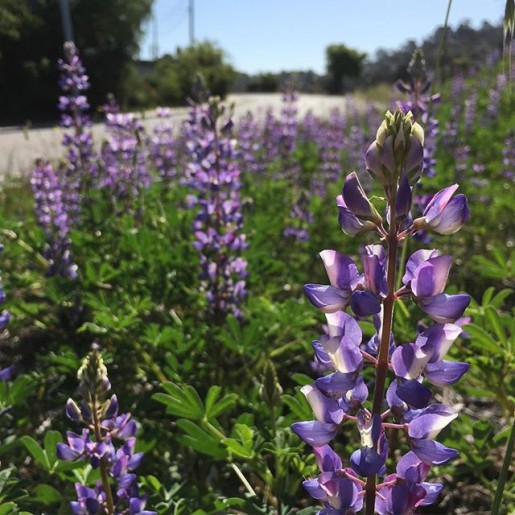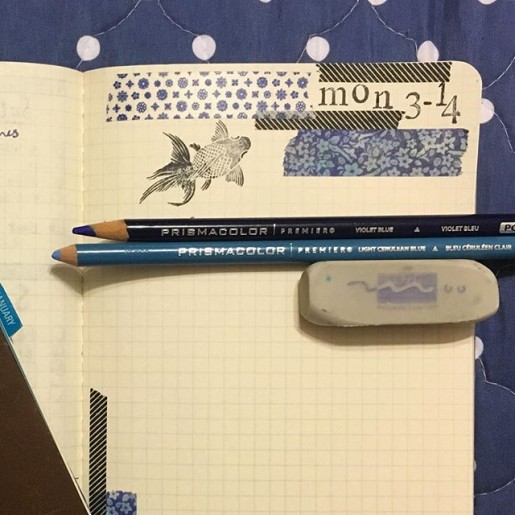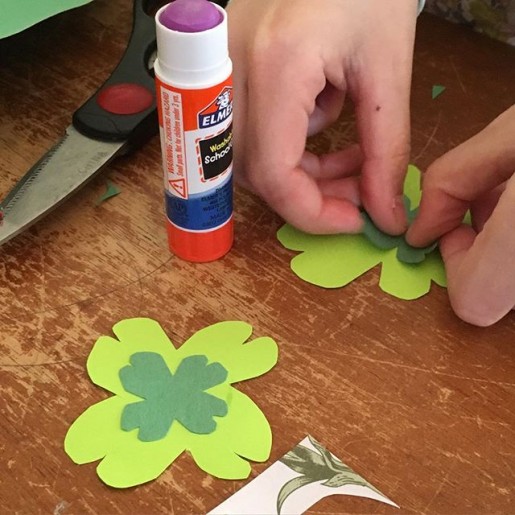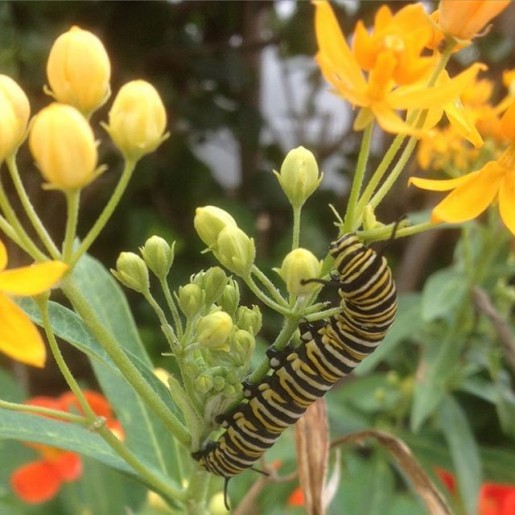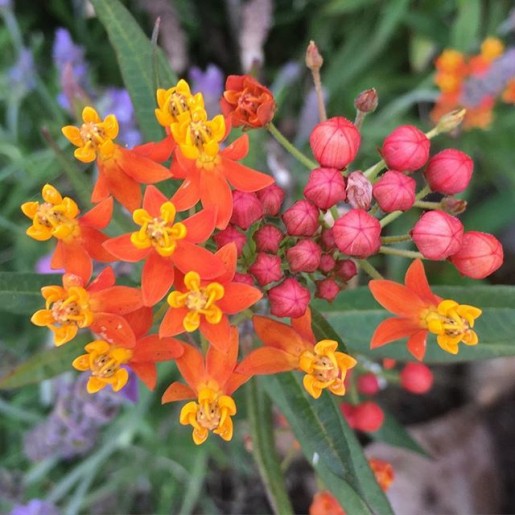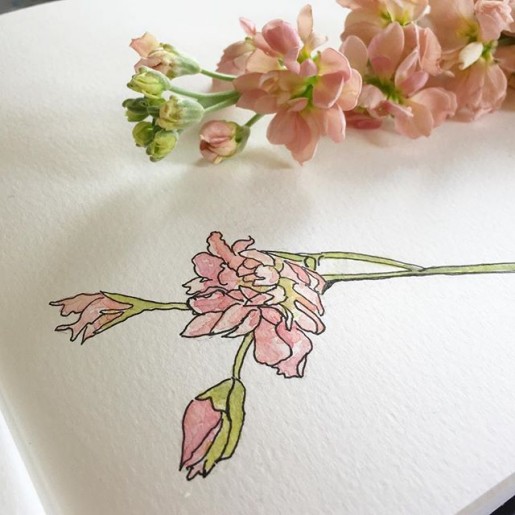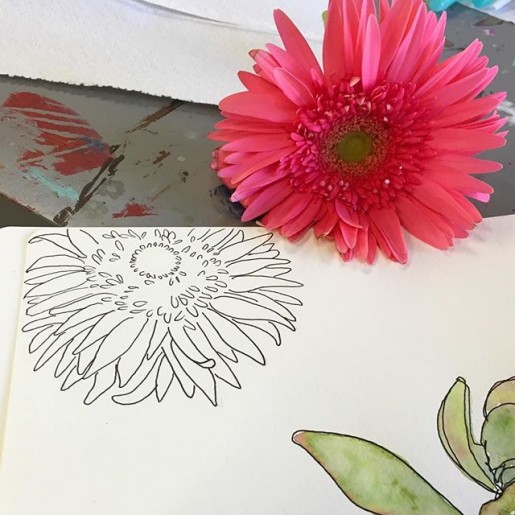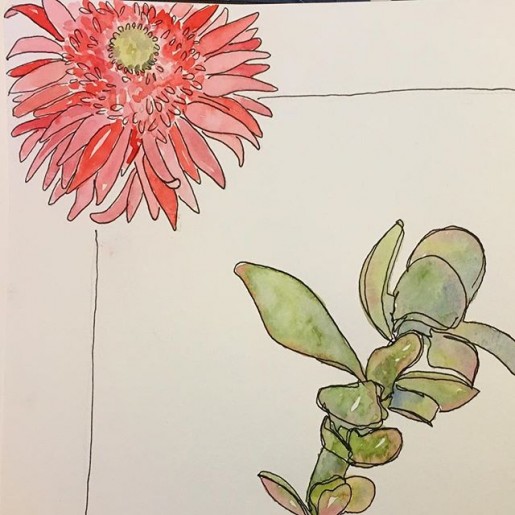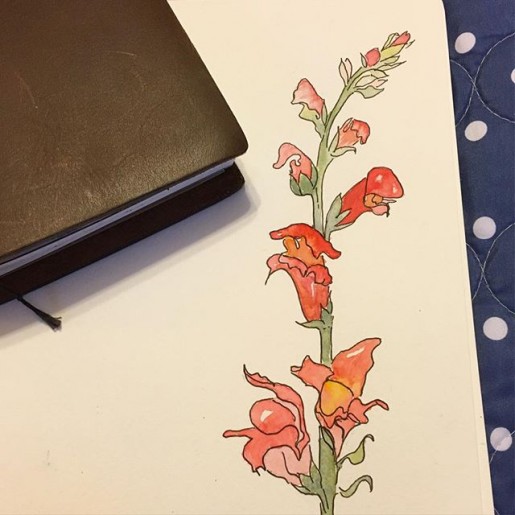new posts in all blogs
Viewing: Blog Posts Tagged with: nature study, Most Recent at Top [Help]
Results 1 - 25 of 76
How to use this Page
You are viewing the most recent posts tagged with the words: nature study in the JacketFlap blog reader. What is a tag? Think of a tag as a keyword or category label. Tags can both help you find posts on JacketFlap.com as well as provide an easy way for you to "remember" and classify posts for later recall. Try adding a tag yourself by clicking "Add a tag" below a post's header. Scroll down through the list of Recent Posts in the left column and click on a post title that sounds interesting. You can view all posts from a specific blog by clicking the Blog name in the right column, or you can click a 'More Posts from this Blog' link in any individual post.

By:
Melissa Wiley,
on 4/13/2016
Blog:
Here in the Bonny Glen
(
Login to Add to MyJacketFlap)
JacketFlap tags:
Photos,
Family Adventures,
Nature Study,
Midori,
Assorted and Sundry,
Paper & Desk,
papery days,
bullet journal,
travelers notebook,
Add a tag
Actually, I guess the first couple of photos here are from March. (1) We hadn’t been to Old Town San Diego in a while and made a quick pilgrimage there one day during Wonderboy’s spring break. (2) Rilla’s bunny chain—entirely her own design—is the best Easter decoration I’ve seen in a long time. Those ears!
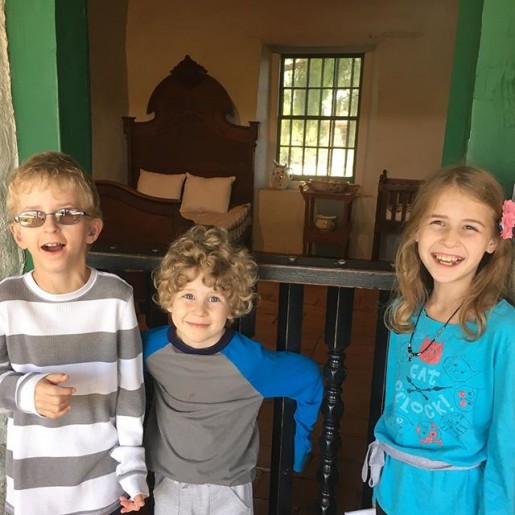
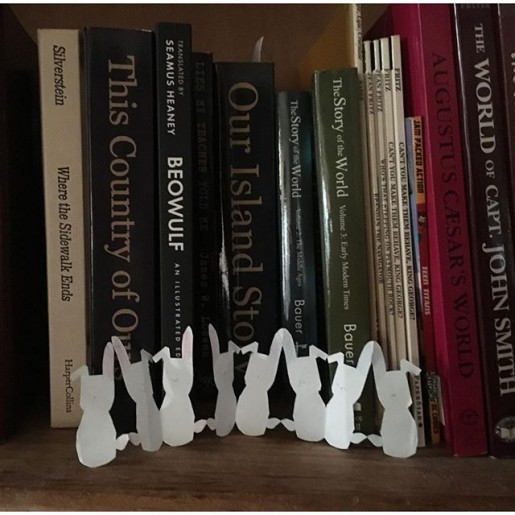
April for real:
(3) How Huck likes to rock his Math-U-See.
(4) Library day. I want that Eric Carle rug!
(5) Another library-day shot. What I love most about this photo is that the bed they’re on belongs to neither of them. It’s Beanie’s—the bottom bunk, which has long been the favorite place for my girls to sprawl. Beanie, meanwhile, does most of her own sprawling on Rilla’s bed. Go figure.
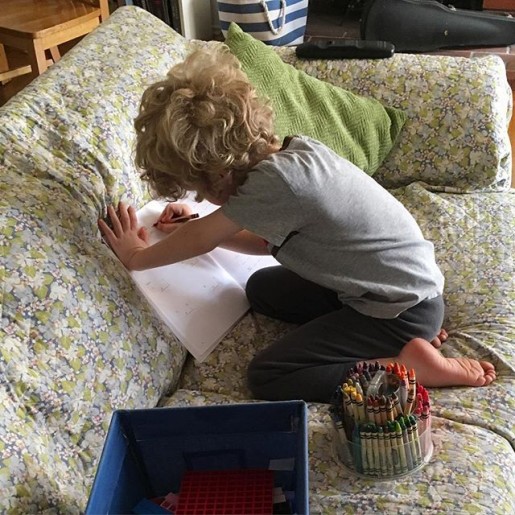
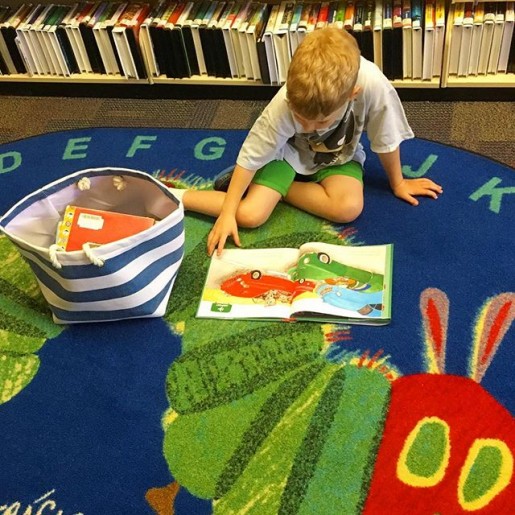
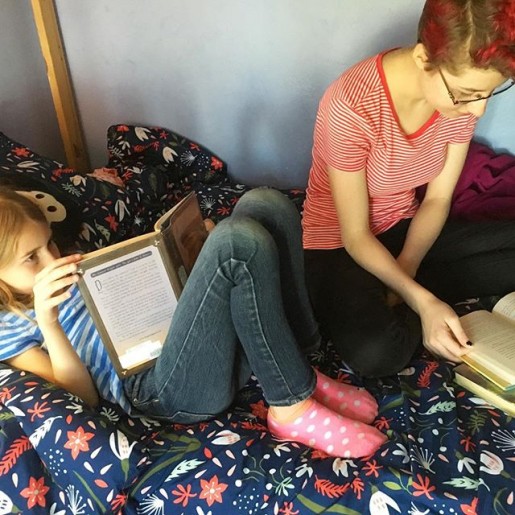
(6) Monarch caterpillar on our milkweed: always a sight that brings me joy.
(7) Wonderboy raised these sunflowers from a handful of old seeds spilled in the bottom of a bag of mostly-empty seed packets. The color surprised us!
(8) Also a surprise this year: the giant blooms on a neglected rosebush by our patio. Loads of them! It’s like Valancy went at the bush with her clippers.
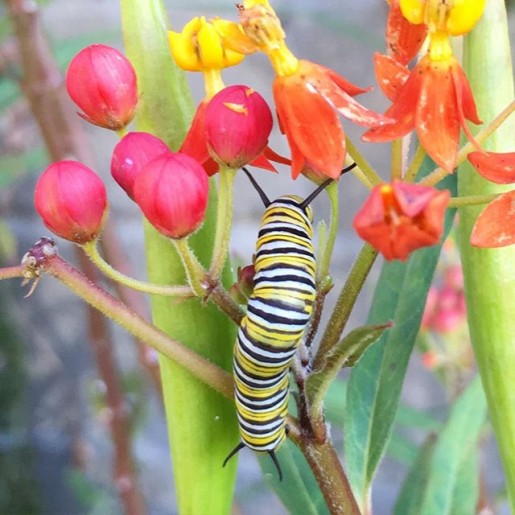
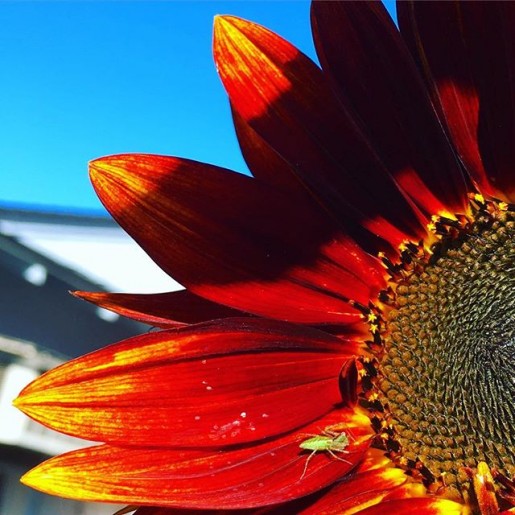
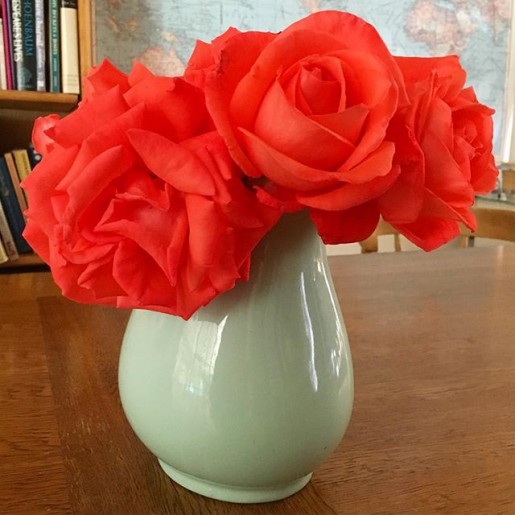
(9) Playing with a Hobonichi Techo-style layout in my bullet journal. Mary Ann Scheuer and I had a fun Skype session last week to chat about my bujo system. What’s working these days: Separate books for my messy notes and my bullet lists. It’s sort of a left brain/right brain thing: I need a space for scribbly notes of all kinds, an unkempt, all-purpose thinking-on-paper space; but I also need nice, neat(ish) to-do lists with boxes I can fill in as I accomplish tasks. It took me a LOT of years—and the revelation of the multiple-insert traveler’s notebook—to figure this out: that I need the two separate spaces.

Yay, now I can fill in that ‘blog’ box!

By:
Melissa Wiley,
on 3/21/2016
Blog:
Here in the Bonny Glen
(
Login to Add to MyJacketFlap)
JacketFlap tags:
Assorted and Sundry,
Paper & Desk,
bullet journal,
Jane LaFazio,
lupines,
Photos,
Art,
Butterflies,
Nature Study,
Monarch butterflies,
watercolors,
Miss Rumphius,
Add a tag
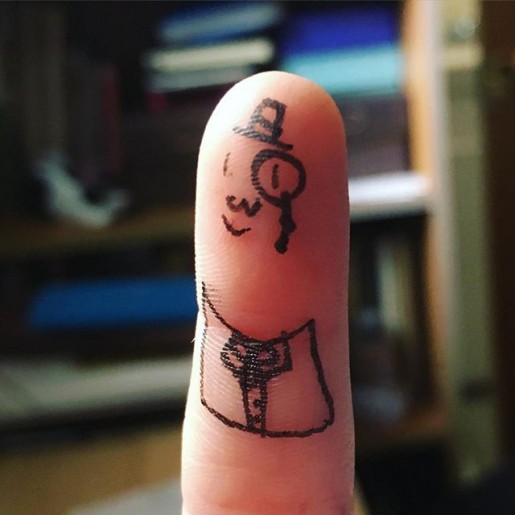
Well, I tried. Sat down at the start of my work time today, fully intending to transition with a blog post just like the old days, but a pressing email caught my attention…and here I am eight hours later.
It has rained on and off all day. Rose is in heaven—that girl was made for the Pacific Northwest, I swear—but I’m off kilter. Happy for the moisture, of course. My poor garden needs it. My freesia had just started to bloom, though—they’ll be a bit battered after the downpour.
Assorted things to chronicle:
Last Friday I was one of six guest authors at the Greater San Diego Reading Association‘s annual Authors Fair. This year we visited Bonsall West Elementary School in Oceanside. I had three classes of 4th-graders (in two groups) whose teachers are reading them The Prairie Thief. I love this event. The kids are already deep into my book and are excited to ask questions. I always start out by reading a chapter, picking up wherever the teacher left off. This time, I got to read the first encounter between Louisa and the brownie—a super fun for me because it’s a mini-reveal. Of course, that means I have to do a Scottish accent but that’s part of the fun. The kids don’t mind if I fumble it. 
***
The other night I was in here working while Scott watched a movie with the kids. He pinged me with a question from our friend Devin (our brilliant writer friend Devin, I should say). She was working on a scene for her current book and needed help with a tree identification. Here’s a screen cap of the Google Street View close-up Scott sent me:
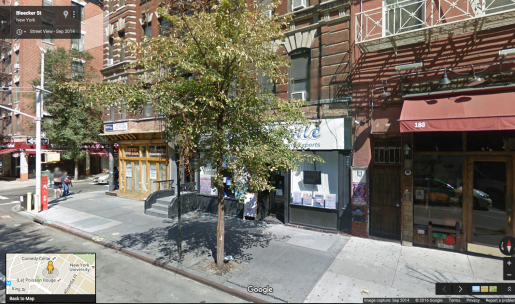
I couldn’t zoom in any tighter than that. Too fuzzy to make out the leaf shapes. But I figured someone out there would have compiled a list of common Manhattan street trees and I turned to my best friend Google. Turns out Someone did way better than that:

the most awesome Lite Brite I’ve ever seen
All those colored dots are trees. Specific trees. I zoomed in on the corner of Bleecker and MacDougal and found our friend the Callery Pear. Man, I love the internet. Major props to Jill Hubley, who created that rather astounding map. And Devin’s dedication to detail is one of the many reasons I love her. Nitty-gritty lovers of the world, unite.
***
Rilla has learned several speeches from A Midsummers Night’s Dream this year. And of course this means Huck is picking them up, too. Hearing them recite Puck’s monologues tickles me no end. “I go, I go, look how I go!” —or a world-weary yet amused “Lord what fools these mortals be…”
***
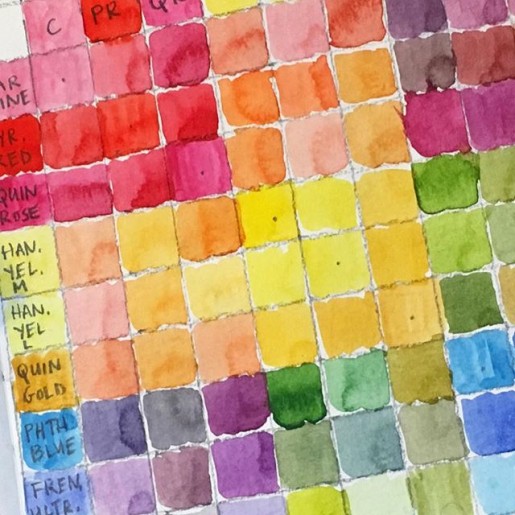
Here’s another thing Rilla and I have been doing with our free time. Color charts. Mmm, I could happily mix paints all day for the rest of my life if you let me.
How’s your week going?

By: AlyssaB,
on 10/2/2015
Blog:
OUPblog
(
Login to Add to MyJacketFlap)
JacketFlap tags:
America,
nature study,
religion in america,
*Featured,
Baptized with the Soil,
Christian Agrarians and the Crusade for Rural America,
Kevin M. Lowe,
Liberty Hyde Bailey,
religion in american history,
Books,
Religion,
Add a tag
In the United States today there is a great push to get children outside. Children stay indoors more and have less contact with nature and less knowledge of animals and plants than ever before. When children do go outside, our litigious society gives them less freedom to explore. Educators and critics such as Richard Louv and David Sobel express a concern that without a real connection to the natural world, something vital will be lost in the next generation -- and that the challenges of climate change may be unsolvable.
The post No child left inside on the Holy Earth: Liberty Hyde Bailey and the spirituality of nature study appeared first on OUPblog.
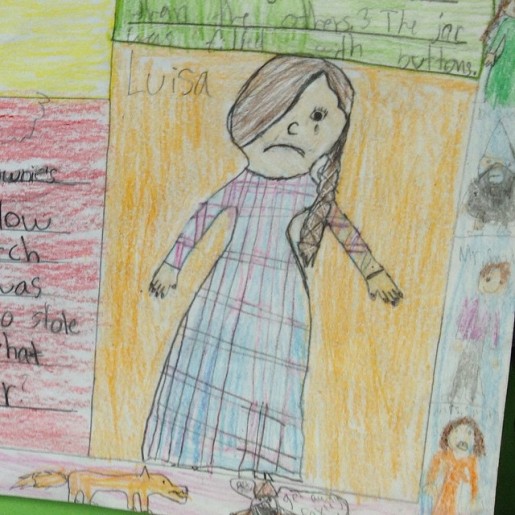
Louisa by Isabelle, grade 5
• Melted at the artwork and poems created by the three classes of fifth- and sixth-graders who welcomed me to the Greater San Diego Reading Association’s annual Authors Fair.
• Read aloud the last chapter of The Prairie Thief to a roomful of eager fifth-graders. Such a delight. I so seldom get to read the end of the book to a school group—I don’t want to give anything away! Exceedingly fun to discover the teacher had been reading the book to the class and saved the finale for my visit. 
• Had a marvelous time swapping book suggestions with the kids during the Q&A after my readings. Hot tip: they are loving The Unicorn Chronicles at the moment.
• Tried out a new voice for Fox in my Storytime at Carmel Valley Public Library on Saturday. Gotta keep it fresh, you know.
• Wrote my tail off all day yesterday.
• Rejoiced with the gang as our monarch butterfly emerged from its chrysalis this morning. We missed the big entrance but not by much. Later, when it was ready to fly, we took it out to the milkweed patch in the backyard, and it rested there long enough for Rilla and me to sketch it. I had just finished adding watercolor when it soared away to the cape honeysuckle, and from there out into the blue. Bon voyage, little dear.
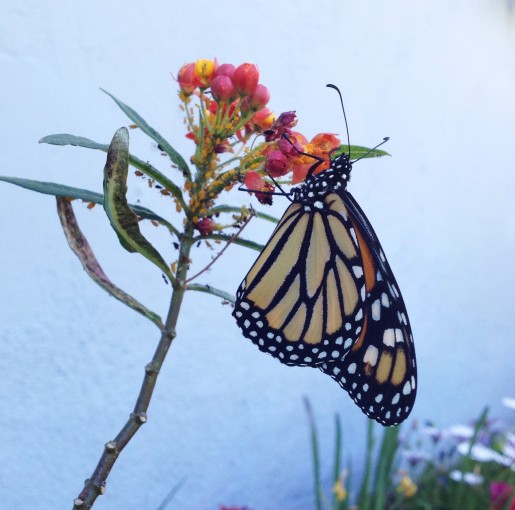
Yes, aphids galore
That was the sign tacked onto the rail at Oceanside Pier, right next to this fellow. I was within arm’s reach before I noticed him.
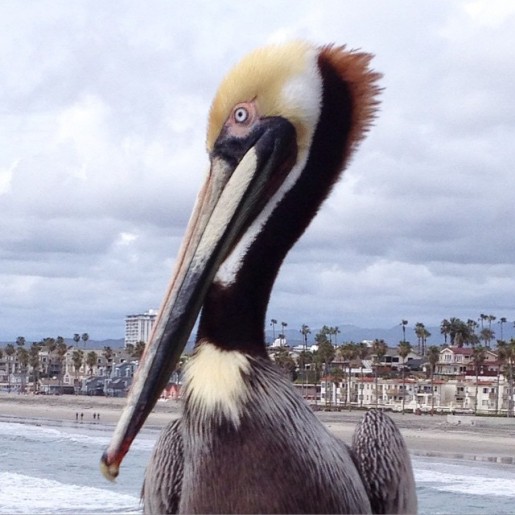
Rose wants to know if she can hang the same sign on her bedroom door.
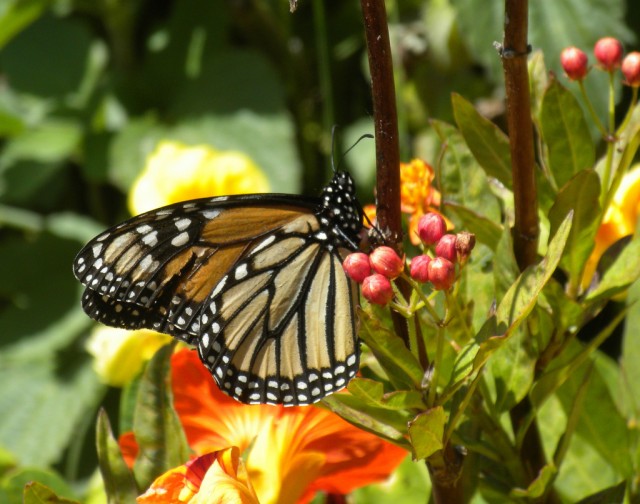
I’ve been blogging about monarch butterflies practically from the moment this blog began. I’ve been growing milkweed, the only host plant for monarch caterpillars, in our yard for over a decade—first in Crozet, Virginia, and then here in San Diego after our move seven years ago. When you leave a comment on this blog, if you don’t happen to have a WordPress avatar set up, the default avatar is a picture of milkweed from my garden. I made a very dopey video, once, showing some of our butterfly plants, and was lucky enough to catch a monarch in the act of laying an egg on the underside of a leaf. We’ve been a family wrapped up in bees and butterflies for a very long time.
We had a fair number of caterpillars last year, enough to eat our five plants to the ground. But this year may be different.
This year, the giant migration that takes place in the mountains of Mexico has been, well, not exactly giant.
…for the first time in memory, the monarch butterflies didn’t come, at least not on the Day of the Dead. They began to straggle in a week later than usual, in record-low numbers. Last year’s low of 60 million now seems great compared with the fewer than three million that have shown up so far this year. Some experts fear that the spectacular migration could be near collapse.
The reasons aren’t a mystery:
A big part of it is the way the United States farms. As the price of corn has soared in recent years, driven by federal subsidies for biofuels, farmers have expanded their fields. That has meant plowing every scrap of earth that can grow a corn plant, including millions of acres of land once reserved in a federal program for conservation purposes.
Another major cause is farming with Roundup, a herbicide that kills virtually all plants except crops that are genetically modified to survive it.
As a result, millions of acres of native plants, especially milkweed, an important source of nectar for many species, and vital for monarch butterfly larvae, have been wiped out. One study showed that Iowa has lost almost 60 percent of its milkweed, and another found 90 percent was gone. “The agricultural landscape has been sterilized,” said Dr. Brower.
This article touches, too, on the dire plight of the honeybee, about which I’ve had much to say on this blog over the years.
I don’t often feel helpless. But with this, I do. What can I do beyond the small acts I’ve been making? Planting milkweed, singing the joys of bee-and-butterfly gardening, avoiding pesticides and herbicides even though that means I have a weedy garden. Keep on singing, I guess?
We went geocaching at a nearby park today. No luck locating the cache (we’ll try again), but we were dazzled by a close encounter with what we think was a great blue heron. He was just standing there on the grass a few yards away, gazing broodingly into the distance. Beanie and Rilla edged as close as they dared and studied him for a long time while Rose and I scoured the leaf litter for that well-camouflaged cache.
My photos didn’t come out terribly well, but when we got home, Rilla drew this picture from memory. What do you think? Great blue?
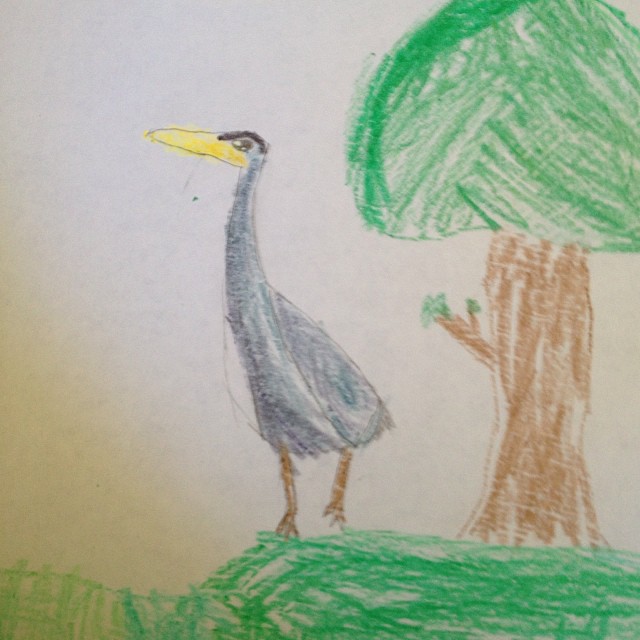
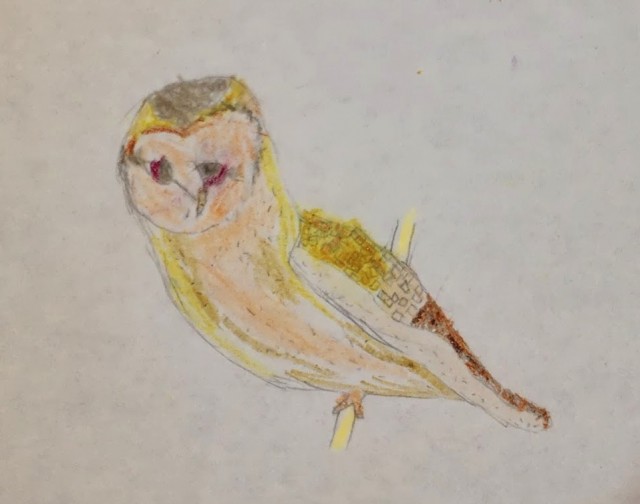
“I flipped the face,” she told me—changed its angle from the tutorial in the book, using a field guide photo to help her. I love the work she’s doing with texture and shading here, diving in and trying things out. The speckles on the breast, the little squares on the wing—I’ll have to look at the model and see where the little squares came from.
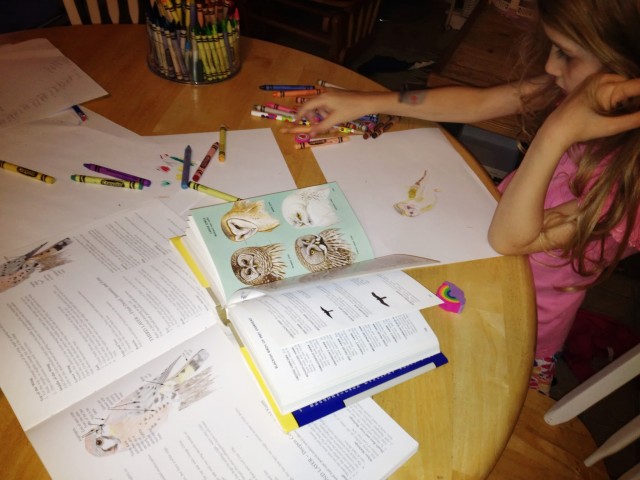
So much of my role with Rilla is staying out of her way. Giving her vast stretches of time to draw and play, giving her space to get messy in. (Actually, she’s kind of a type A artist—very precise about her materials and workspace.) And of course strewing, strewing, strewing, the good old Sandra Dodd coinage* that captures the essence of my approach to family life: leave neat stuff where the kids can find it—and be around to talk about it when they’re ready.
She spent half the evening working away at this owl. Yesterday it was a pair of goldfinches, because they’ve been delighting us at our feeders.
Here’s the book that has captured her fancy: Drawing Birds with Colored Pencils. Amazon tells me I bought it in August, 2011. It saw a brief period of use then, with Beanie I think, and has mostly lived on the field guide shelf until now. I don’t know if it was chicken or egg—whether Rilla found the book and decided to dive in, or went hunting for help because she wanted to draw birds. I’ll ask her tomorrow, if I remember. All our drawing and nature books are stashed on shelves in our dining area, right behind Beanie’s chair and directly in Rilla’s line of sight.
*Sandra’s strewing page begins with a quote, “I just strew their paths with interesting things,” captioned “long ago, AOL homeschooling boards.” I was there, reading along, nursing infant Jane, when she wrote it! And now, many strewn paths later, Jane’s preparing to head off to college. We made the first big dorm shopping expedition today. I can still see those early AOL conversations scrolling across my screen—I got my first modem and my first baby in the same month—and thinking, Ohhh, this homeschooling thing has possibilities, I’ve gotta talk to Scott. Amazing.
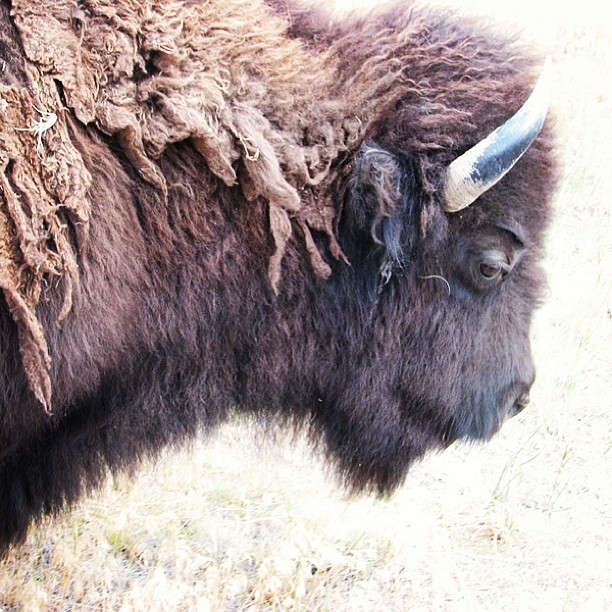
Those who saw the buffaloes by thousands and how they pawed the prairie sod into dust with their hoofs, their great heads down pawing on in a great pageant of dusk,
Those who saw the buffaloes are gone.
And the buffaloes are gone.
Happy to say they’re not, in fact, gone for good.
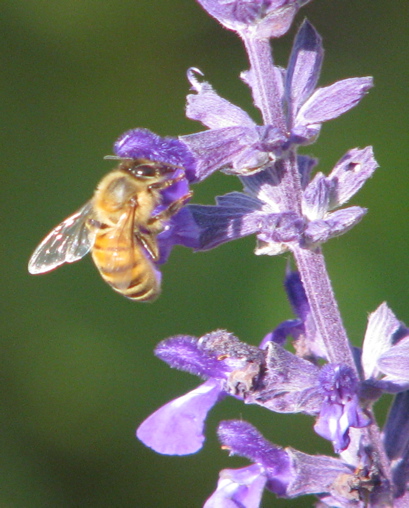
I know I’ve been singing this song for a long time, y’all, but it’s bad, bad, bad and getting worse.
Soaring Bee Deaths in 2012 Sound Alarm on Malady – NYTimes.com
“They looked so healthy last spring,” said Bill Dahle, 50, who owns Big Sky Honey in Fairview, Mont. “We were so proud of them. Then, about the first of September, they started to fall on their face, to die like crazy. We’ve been doing this 30 years, and we’ve never experienced this kind of loss before.”
When beekeepers and scientists first starting investigating colony collapse disorder, causes were uncertain. Rowan Jacobsen’s excellent book, Fruitless Fall, explores possible reasons. (Here’s one of my many posts about the book.)
Five years later, we have a much clearer idea of exactly what is happening, and it’s very bad news.
But many beekeepers suspect the biggest culprit is the growing soup of pesticides, fungicides and herbicides that are used to control pests.
While each substance has been certified, there has been less study of their combined effects. Nor, many critics say, have scientists sufficiently studied the impact of neonicotinoids, the nicotine-derived pesticide that European regulators implicate in bee deaths.
The explosive growth of neonicotinoids since 2005 has roughly tracked rising bee deaths.
Neonics, as farmers call them, are applied in smaller doses than older pesticides. They are systemic pesticides, often embedded in seeds so that the plant itself carries the chemical that kills insects that feed on it.
The pesticide is embedded in the seeds. I posted to another piece on this topic this last week, and these are just a couple of the many anxious reports I’ve picked up on my bee wire (Google Alerts, when they’re working) in the past few months. I know I’m probably preaching to the choir here, but I implore you to read up on this issue, if you haven’t yet, and to spread the word far and wide. If we lose the bees, we lose the world as we know it.

By:
Melissa Wiley,
on 3/26/2013
Blog:
Here in the Bonny Glen
(
Login to Add to MyJacketFlap)
JacketFlap tags:
rillabooks,
Amy Ludwig VanDerwater,
Forest Has a Song,
Books,
Poetry,
picture books,
Nature Study,
Wonderboy,
Picture Book Spotlight,
Rilla,
Clarion Books,
Robbin Gourley,
Add a tag
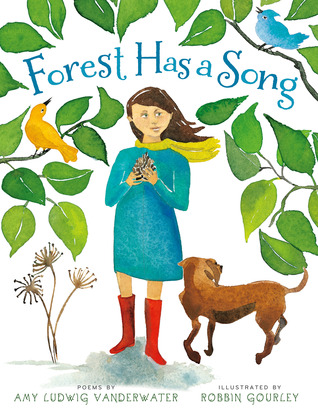
Forest Has a Song by Amy Ludwig VanDerwater, illustrated by Robbin Gourley.
Dear Amy,
My name is Rilla. I am 6. Mommy read Forest Has a Song to me. I think that It Is really pretty poetry and i also think that deer are pretty too. I really love nature. And deer are one of my favorite animals and it said a lot about deer. In the picture of the fiddlehead ferns, I really like the pattern of the colors. And the fossil looks so realistic. When I grow up i want to be an illustrator like Robbin Gourley. And also, i love the Spider poem and the Dusk poem. I love the never-tangling dangling spinner part. And I love baby animals. They’re so cute and fluffy when they’re birds at least.
One of my favorites is “Farewell.” How it says “I am Forest.”
Love,
Rilla
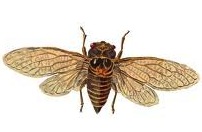
(Doggone spellcheck. She made me correct all her invented spellings—the red dots under her words tipped her off. Then again, “rhille priddy powatre” might have been hard for you to parse. Also, of course, recognizing that a word just looks wrong is a big step toward learning to spell.)

As for the book, I wholeheartedly agree with Rilla’s review. What a gorgeous, gorgeous volume. The poems sometimes wistful, sometimes whimsical, always lyrical. Beautiful for reading aloud, full of delicious internal rhyme and alliteration. And infectious: I predict a lot of original nature poetry in our future. This collection begs you to take a fresh look at the world around you and see the magic of the curled fern frond, the mushroom spore. Of course I’ve been a fan of Amy Ludwig VanDerwater’s work for years.
I can’t imagine a more perfect pairing for Amy’s poems than Robbin Gourley’s art. Lush watercolors, rich and soft. I kept coming across pages I’d like prints of. Actually, this is exactly the kind of book where you want a second copy for cutting up and framing. (If you can bear to. I always think I’d like to do that, but the one time I actually bought a spare copy for this purpose—Miss Rumphius—I couldn’t, in the end, bring myself to dismantle it.)
Beanie’s favorite poem was “Forest News”—
I stop to read
the Forest News
in mud or fallen snow.
Articles are printed
by critters on the go…
—which she loved for its intriguing animal-tracks descriptions, its sense of fun, and its kinship with her favorite Robert Frost poem, “A Patch of Old Snow.” (“It is speckled with grime as if / Small print overspread it, / The news of a day I’ve forgotten — / If I ever read it,” writes Frost, perusing a somewhat more somber edition of the woodsy chronicle.)
Wonderboy’s favorite was the puffball poem, and he later wrote (in his customary stream-of-consciousness style) this string of impressions the book made on him: “dead branch warning and woodpecker too dusk burrow in a burrow chickadee sit on my hand and come fly here”…
Truly beautiful work, Amy and Robbin.
Loaded my own pictures; they weren’t as blurry as I expected. Think we’ve got a positive ID on that white-tailed kite. A new one for my lifetime birding list!
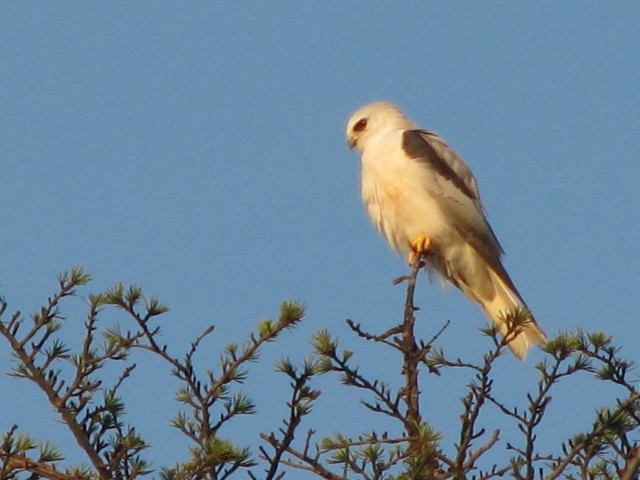
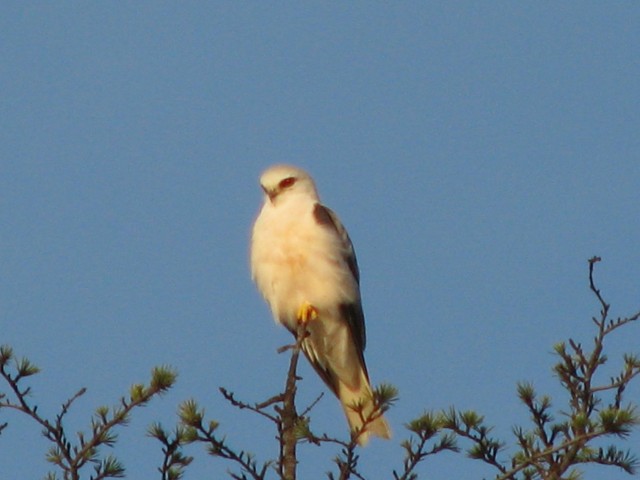
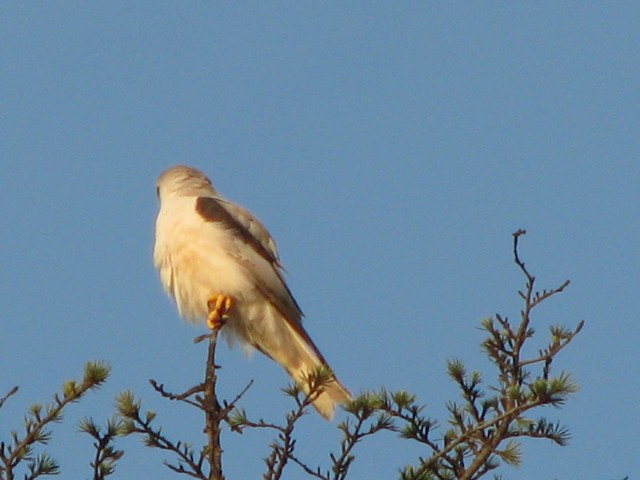
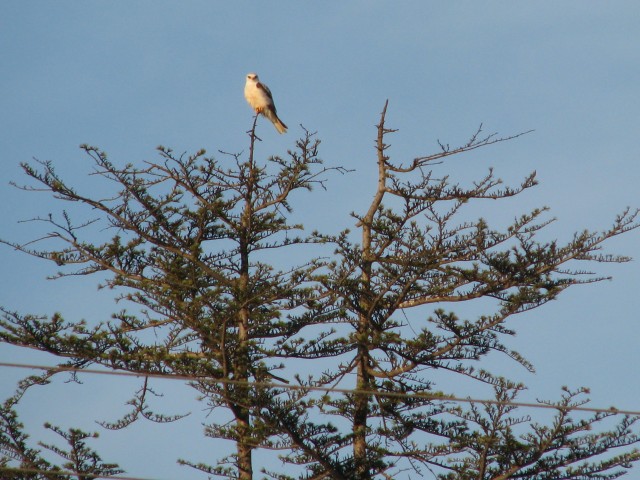
Reposting Rose’s photo (the best of the lot by far) so we’ll have them all together:
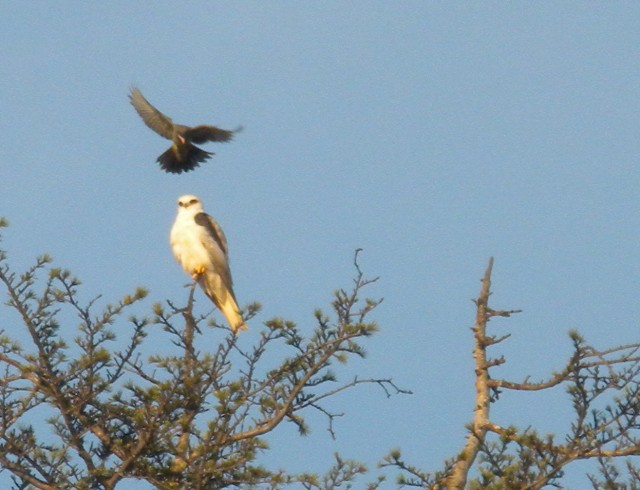
White-Tailed Kite info

Rose caught this rather wonderful shot yesterday, just down the street from our house. I missed it—I’d been out there gawping at the hawk (ID, anyone? its coloring is throwing me off—could it possibly be a white-tailed kite?)* and had snapped a few wobbly pix, using Beanie’s head as a tripod, but then I ran back to the house to take over stirring the marshmallows Jane was melting for Rice Krispie treats, so she could have a turn. The mobbing crow came along just after I left. Well done, Rose.
*UPDATE: yes, we think so!
The marshmallow treats were this year’s double-birthday feast, in lieu of a cake. My guys had a great day. At Scott’s request, we had a family reading of The Tempest (Act 1; we’ll continue on future Sundays). Rilla did us proud; she gave a splendid cold reading of the role of Ariel (with some vocab coaching from Rose, who prefers to stage manage). Scott was Prospero, Beanie read Miranda, and Jane and I split the other parts between us. I got to ham it up as the old boatswain, so I was happy.
Books read over the weekend:
Tippy-Tippy-Tippy Hide by Candace Ransom, illustrated by G. Brian Karas
Mr Pusskins: A Love Story by Sam Lloyd
Hist Whist by ee cummings (a Halloween book, yes, but a year-round Rilla favorite)
Recently watched:
Cranford (happy sigh)
The Avengers
In the garden:
Roses in bloom, cosmos & poppy seedlings thriving, cape honeysuckle glorious, freesia and daffodil bulbs coming up. And the rain lilies, too, I think.
The parrots rushed up out of the schoolyard tree and I tried to capture them—the vivid emerald leaves against the blue, such a sight!—but my camera couldn’t manage their color and their speed, not at the same time.
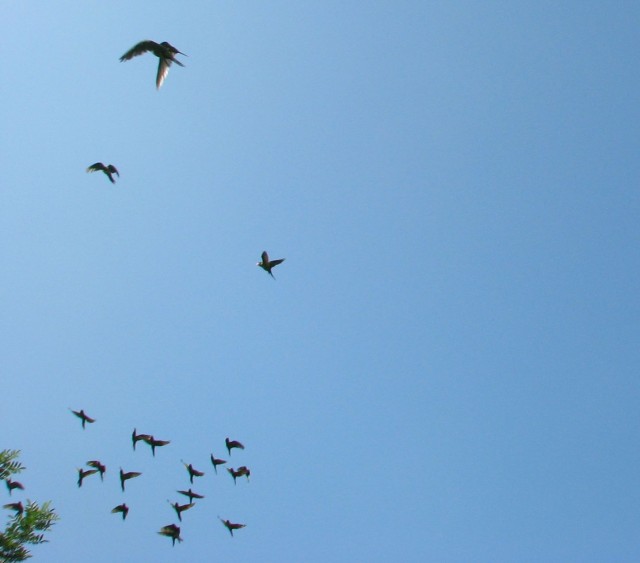
I love the story, quite probably true, that these birds are descendants of some long-ago escapees. You run into them all over town; you’ll be riding along with your windows down and realize, suddenly, that you’re shouting to be heard above the din, and one of the children will cry out, “Oh, the parrots!” and everyone cranes necks to find the raucous green sky-ballet troupe. This time of year, they seem to favor our neighborhood, especially the giant Moreton bay fig tree just the other side of our backyard fence. They annoy our crows, who nest there. The crows flap up in a huff and scowl down from the power lines. The parrots just laugh.
This one’s for my kids, because they like adorable cuddly creatures like this.

The 13 Scariest Freshwater Animals in the World — National Geographic.
This one’s for me, because I love adorable cuddly creatures like this.
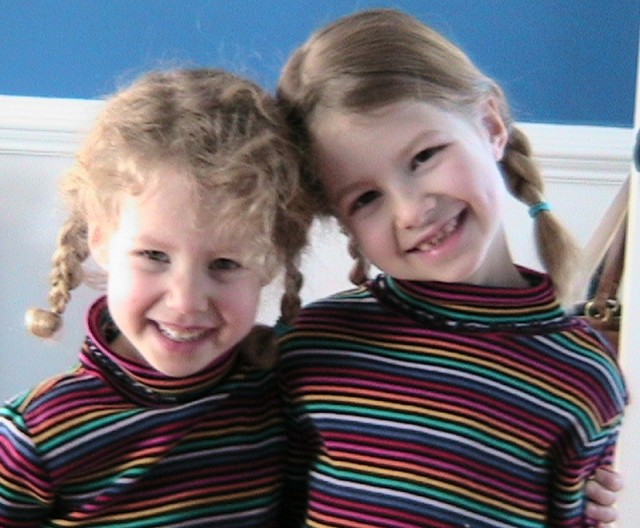 Fall 2005
Fall 2005
This one’s for my kids, because they like adorable cuddly creatures like this.
 The 13 Scariest Freshwater Animals in the World — National Geographic.
The 13 Scariest Freshwater Animals in the World — National Geographic.
This one’s for me, because I love adorable cuddly creatures like this.
 Fall 2005
Fall 2005
(This one’s for me. The more scattered-across-many-networks my internet life becomes, the more important it seems to archive things here, where I will always be able to find them.)
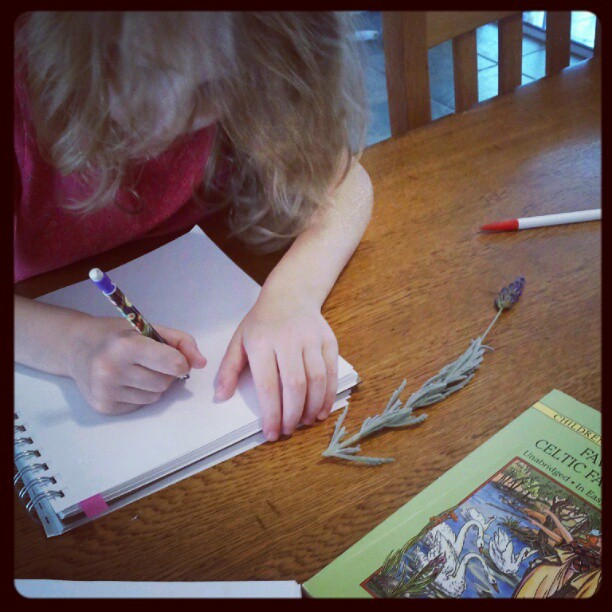
She says nature study is her favorite part of the day. It isn’t an everyday thing—not the journaling, I mean—just once or twice a week. She especially loves the “talking part,” the part where we look (smell, touch, sometimes taste) at a sprig of this or that, studying it closely, discussing its characteristics. “So,” she’ll say, with the same inflection used by my elderly neighbor back in Queens, no nonsense, ready to dish. “So. Let’s look, Mommy.” I ask leading questions: leaf shape, growth pattern, texture, scent. She peers closely, so serious. And then suddenly in the midst of all this Careful Observation she’ll flash a grin: “This is awesome.”
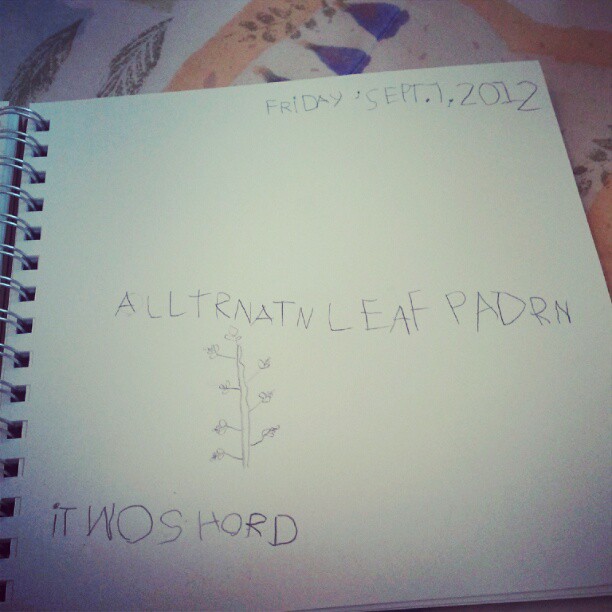
“Alternating leaf pattern. It was hard.” 
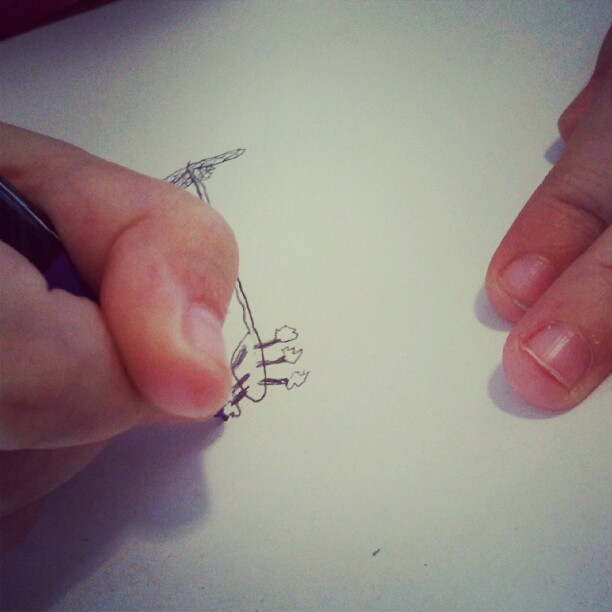
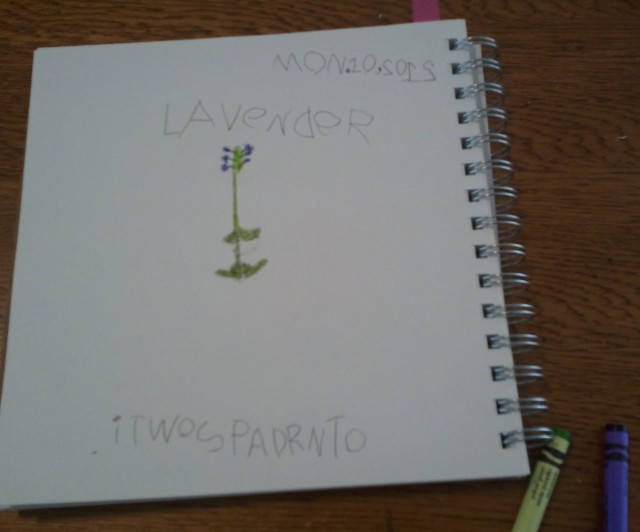
“It was patterned too.”
(And lest this sound too perfect, let me add for the record that none of her sisters demonstrated much interest in nature journaling past the age of, oh, maybe eight or so. They all moved on to other pursuits. Which is fine! I have marveled at every age. Six is delicious, and fleeting, and full of wonder. I’m savoring it.)
Rilla: Mommy! What kind of bird is that?
Me: It’s a mockingbird, see its tail?
Huck (gasps): Me know all about knockingbirds!
Me: You do? Tell me about them.
Huck: They knock trees over. And the fence.
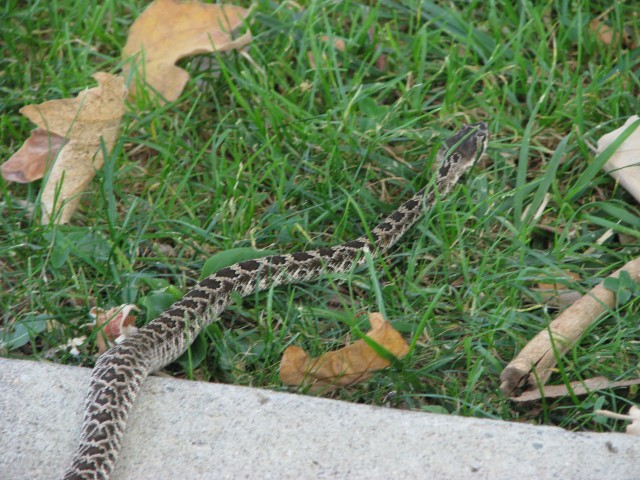
Yes, again. This is what happens when you build suburbs in the chaparral.
This time, we weren’t on a hiking trail in the hills. This time, we were running down the path from the water fountain to the playground at a park we only just discovered this morning. Upon arrival, I wrote Scott: “This is the best park I’ve seen since we moved here.” Beautiful place. Towering trees shading a narrow creek (more stones than water) and an elaborate playground—a welcome improvement on the sunbaked playgrounds we usually frequent. Enormous rocks for climbing, glorious golden hills rising up just beyond the park’s borders, a conveniently located restroom, a functioning water fountain. Before the first child had reached the top of the slide, I was envisioning a regular weekly park day at this heretofore undiscovered (by me, at least) gem.
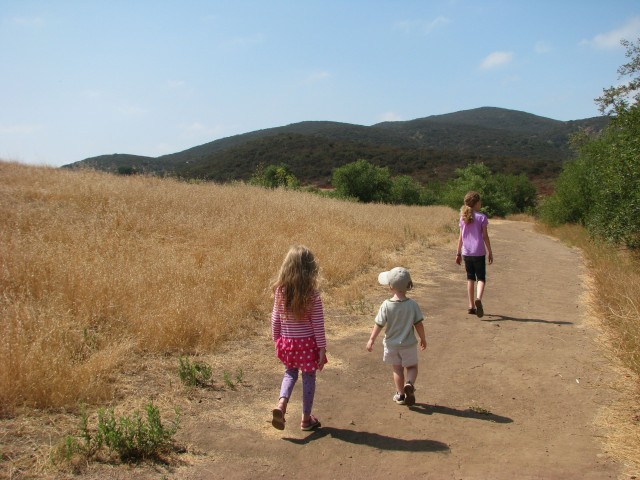
The kids ran around the playground for half an hour; Beanie spent a long time pushing Rilla on the swings. Then we meandered over to the creekbed, watched a squirrel, climbed a tree, and after a bit, I decided it was sunny enough on the trail beyond the park fence that we could risk a short walk. Too hot for rattlers on the path at that time of day, I reasoned. But Wonderboy was spooked by the memory of that other rattler, the big one we happened upon on a similar trail, and we turned back after a only a few minutes. Back to the swings, the rocks, the blissfully cool shade under the trees.
On the way to the water fountain, Huck complained of mulch in his shoes. I stripped them off: he’s happier barefoot. He raced up the short stretch of sidewalk between playground and fountain, following the others. I trailed behind, stepping over a few fallen leaves and scattered twigs. Drinks accomplished, we turned to head back to the playground. Huck was in front, still barefoot, and I registered that the stick he was about to jump over wasn’t a stick at all just as he did, in fact, jump over it. His chubby bare foot hit the ground about an inch from the slithering, diamonded, triangle-headed, rattle-having stick.
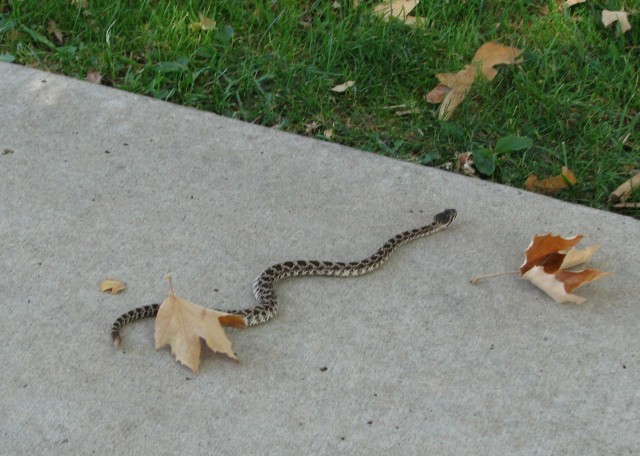
I screamed. Launched myself between Huck and the snake. It wasn’t a big rattler, and it was leaving the path in a hurry, heading for the aforementioned blissful shade under the trees. I backed the kids way up, looked around wildly—and then, yes, took a picture. I mean, I was already holding my camera, and it was clear the thing wanted to put some distance between itself and my pack of wild monkeys.
By this point the playground was filled with a group of day-camp kids who’d arrived for a picnic. I hustled my kids back toward the parking lot, stopping to alert the camp counselors to the presence of the snake. They put in a call to Animal Control and herded their charges to the cement-floored picnic area. The snake hung out under the swings—Rilla’s swing—for a bit and then chan

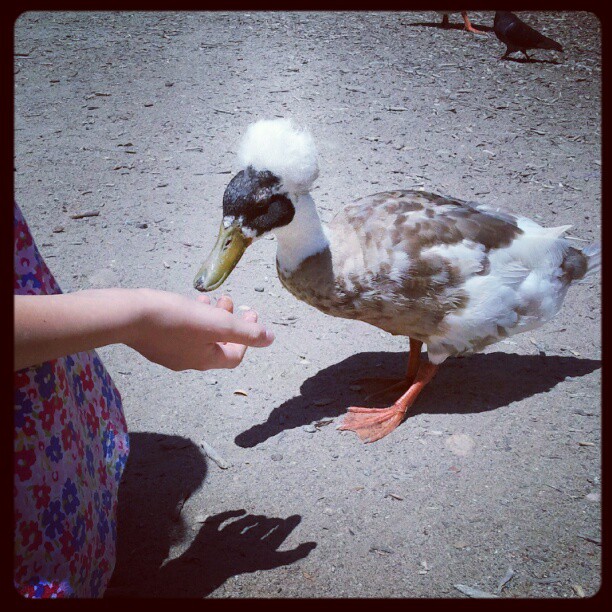
So says Rilla. Her father does not approve. Her father is not a fan of tarantulas.
But he’ll forgive me, because he knew what he was getting into when he married me—the runaway train of my enthusiasm. How did we get on to spiders this morning? Rose said something about liking them; I think that was it. Beanie shuddered; she sides with her daddy on this one. Rose and I had a sudden impulse to go outside and see how many different kinds of spider we could count. Oddly, the pickings were slim: we only found two. Usually, they’re everywhere you look, causing some small child or other to shriek and run away. But there were two tiny ones of a species we’ve yet to identify, teensy oblong things with thin stripes of brown and tan, poised on webs stretched between the stems of the rose bush. Look, said Rose, I found this out yesterday: if you put a bit of twig in the web, the spider will come and snip it out. We waited, but the spider was on to us, frozen, silently glaring. Ten minutes later, after we’d roamed the yard in search of others, the twig was gone.
By chance—or maybe this is what put spiders on Rose’s mind this morning?—I’d pulled Fabre’s Life of the Spider off the shelf a day or two ago, thinking it might make a nice nature-study read for the summer, and added it to the high-tide stack in the living room. At the time, I wasn’t at all sure it would grab my girls—read-alouds are a challenge, these days, with one sweet boy endlessly butting in with questions, and the other impish one endlessly butting you with his head. But they were interested, so I gave it a try. Note to writers: If you want to hook an audience of 6-13-year-olds, “Chapter 1, The Black-Bellied Tarantula” is a sure-fire way to begin.
The Spider has a bad name: to most of us, she represents an odious, noxious animal, which every one hastens to crush under foot. Against this summary verdict the observer sets the beast’s industry, its talent as a weaver, its wiliness in the chase, its tragic nuptials and other characteristics of great interest. Yes, the Spider is well worth studying, apart from any scientific reasons; but she is said to be poisonous and that is her crime and the primary cause of the repugnance wherewith she inspires us. Poisonous, I agree, if by that we understand that the animal is armed with two fangs which cause the immediate death of the little victims which it catches; but there is a wide difference between killing a Midge and harming a man. However immediate in its effects upon the insect entangled in the fatal web, the Spider’s poison is not serious for us and causes less inconvenience than a Gnat-bite. That, at least, is what we can safely say as regards the great majority of the Spiders of our regions.
Nevertheless, a few are to be feared; and foremost among these is the Malmignatte, the terror of the Corsican peasantry. I have seen her settle in the furrows, lay out her web and rush boldly at insects larger than herself; I have admired her garb of black velvet speckled with carmine-red; above all, I have heard most disquieting stories told about her. Around Ajaccio and Bonifacio, her bite is reputed very dangerous, sometimes mortal.
Well played, Monsieur Fabre.
Of course we had to look up these twin terrors, the malmignatte with her thirteen red spots, and the tarantula, about whom Fabre’s predecessor, Leon Dufour, waxes quite lyrical: “…when I was hunting her, I used to see those eyes gleaming like diamonds, bright as a cat’s eyes in the dark.” Off we trotted to Wikipedia, for pictures, and YouTube, for pictures that move.
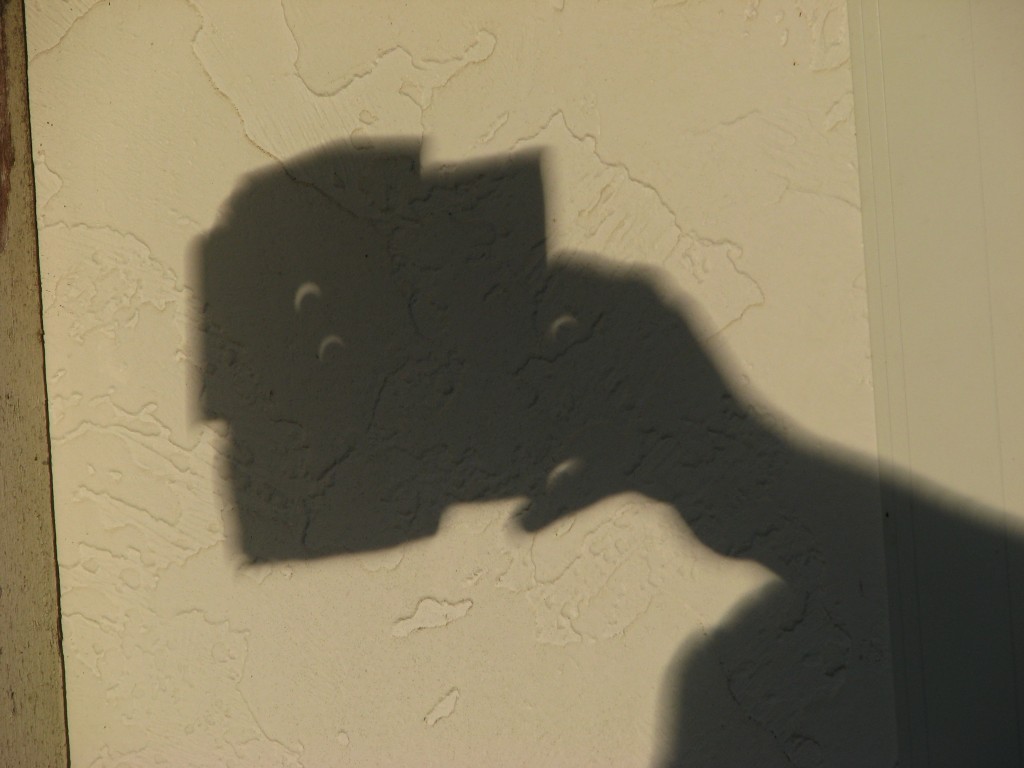
The eclipse through Scott’s homemade pinhole lens.
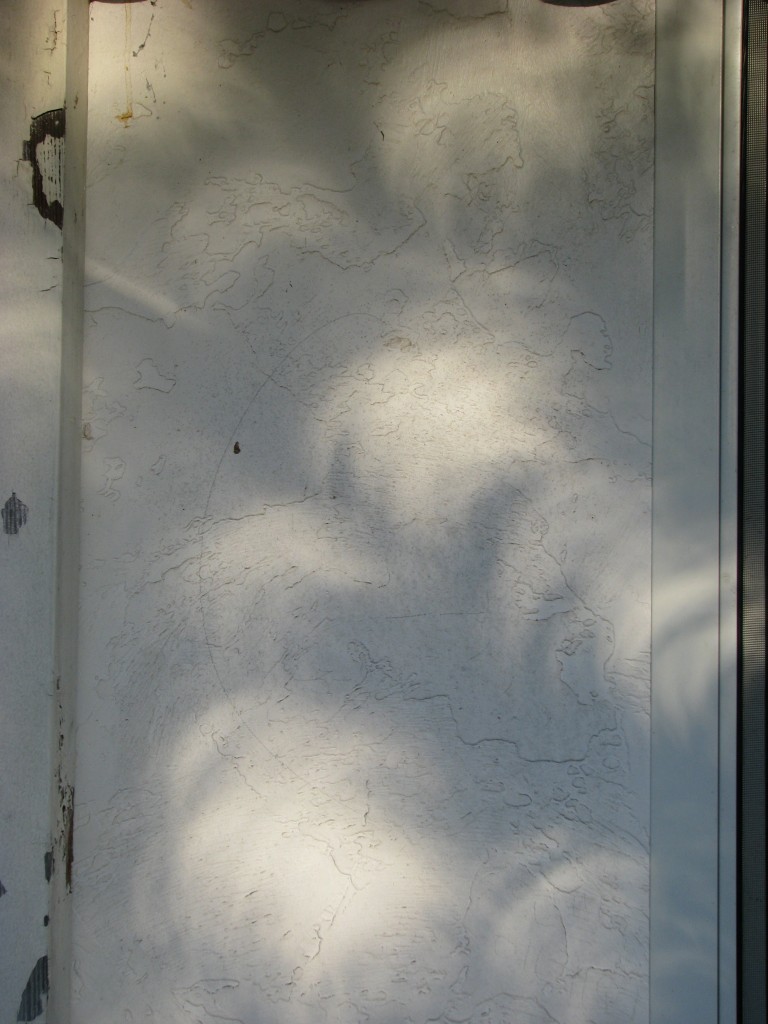
Eclipse shadows through the trees—lovely.
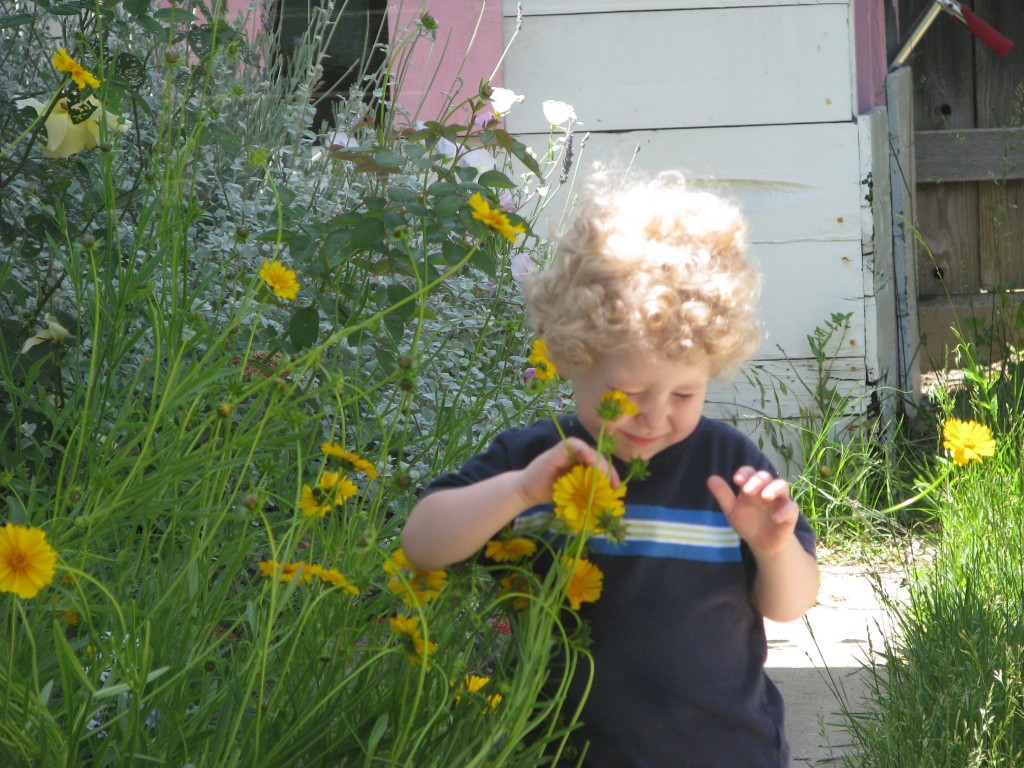
I watched him walk back and forth past my overgrown coreopsis for a good five minutes—walking deliberately close to them so that they repeatedly thwapped him in the face. This is fun because…why?

Scrub jay. Showed off for half an hour in various parts of the yard, preening, strutting, demanding admiration. We obliged. 
View Next 25 Posts












